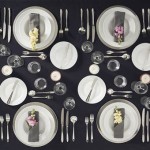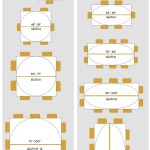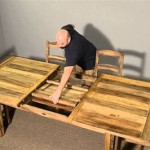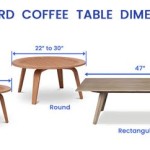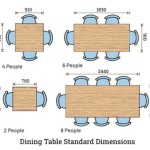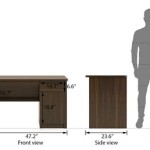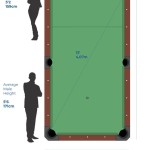How To Protect Your Wood Table Top: A Comprehensive Guide
A wood table top is a significant investment, adding warmth, character, and functionality to any space. Whether it's a dining table, coffee table, or desk, the surface is constantly exposed to various hazards, from spills and scratches to heat and sunlight. Protecting it is crucial to preserving its beauty and extending its lifespan. This article provides a comprehensive guide to safeguarding your wood table top from common forms of damage.
Regular Cleaning and Maintenance
Consistent cleaning is the first line of defense against damage and buildup. Dust, crumbs, and other debris act as abrasives, potentially scratching the surface over time. Select cleaning methods and products tailored to the finish on your wood table. Different finishes react differently to cleaning agents, so it is imperative to understand the type of coating applied to your wood.
For surfaces with a polyurethane or lacquer finish, a soft, damp cloth is usually sufficient for daily cleaning. Ensure the cloth is only slightly damp to avoid prolonged water exposure. Wipe the surface in the direction of the wood grain to prevent streaking and to effectively remove any embedded dirt. Follow up with a dry cloth to eliminate any remaining moisture.
If the table has an oiled or waxed finish, avoid using water-based cleaners, as they can strip away the protective layer. Instead, use a cleaner specifically designed for oiled wood, or simply dust with a soft cloth. Periodically reapply the oil or wax according to the manufacturer's instructions to replenish the finish and maintain its protective qualities. Linseed oil or tung oil, for example, are common options, but it's crucial to choose one that aligns with the original finish.
Avoid using harsh chemicals, abrasive cleaners, or scouring pads. These materials can damage the finish and leave behind unsightly scratches. Be particularly cautious with ammonia-based cleaners, as they can dull the surface and potentially dissolve certain finishes. Avoid cleaning products that contain silicone. Silicone can create a film that interferes with refinishing if it becomes necessary.
Immediately address spills to prevent staining. The longer a liquid sits on the surface, the greater the chance it will penetrate the finish and leave a mark. Use a clean, absorbent cloth to blot the spill, working from the outside in to prevent it from spreading. Once the spill is removed, clean the area with a damp cloth and dry thoroughly. For particularly stubborn spills, consider using a specialized stain remover designed for wood surfaces. Exercise caution and always test the product in an inconspicuous area first to ensure it doesn't damage the finish.
Regular waxing can also help protect the wood. Wax creates a barrier against moisture and scratches and adds a subtle sheen to the surface. Apply wax sparingly, following the directions on the product label. Buff the wax with a soft cloth to achieve a smooth, even finish. For newer tables, waxing every few months is adequate. Older tables that see more wear and tear may benefit from more frequent waxing.
Protecting Against Heat and Scratches
Heat and scratches are two of the most common threats to a wood table top. Hot dishes, mugs, and pots can leave unsightly rings or marks on the surface, while sharp objects and abrasive materials can cause scratches and dents. Implementing preventative measures is vital to minimizing these risks.
Always use coasters under glasses and mugs to protect the table from condensation and heat. Choose coasters made of absorbent materials, such as cork, felt, or leather, to effectively absorb moisture and prevent it from reaching the wood. Avoid using coasters with rough or abrasive surfaces, as they can scratch the table. Regularly clean coasters to remove any accumulated spills or debris that could damage the table’s surface.
Use trivets or hot pads under hot dishes and cookware to prevent heat damage. Opt for trivets made of heat-resistant materials, such as silicone, cork, or metal. Be especially cautious with dishes that have been heated in the oven or microwave, as they can retain heat for a long time. Ensure the trivet is large enough to fully support the dish being placed on it, and that the dish is not in direct contact with the table surface. Avoid placing hot items on the table for extended periods, even with a trivet, as prolonged exposure to heat can still cause damage.
Use placemats or tablecloths to protect the table from scratches and spills during meals. Placemats provide a barrier between the table and plates, cutlery, and serving dishes, reducing the risk of scratches and spills. Choose placemats made of durable, easy-to-clean materials, such as vinyl, cloth, or cork. Tablecloths provide more comprehensive protection, covering the entire surface of the table. Choose a tablecloth that is made of a stain-resistant fabric and that is appropriately sized for the table.
Exercise caution when placing objects on the table. Avoid dragging or sliding heavy items across the surface, as this can cause scratches. Lift and place objects carefully. Consider using felt pads on the bottom of lamps, vases, and other decorative items to prevent them from scratching the table. Regularly inspect these items for sharp edges or rough surfaces that could damage the table.
Trim pets' nails regularly to prevent them from scratching the table. Pets can unintentionally scratch the surface while jumping on or off the table, or while trying to reach food or toys. Keep pets off the table whenever possible, and provide them with designated areas to rest and play.
Protecting Against Sunlight and Humidity
Prolonged exposure to sunlight and fluctuating humidity levels can also damage wood table tops. Sunlight can cause fading or discoloration, while humidity can lead to warping, cracking, or swelling. Taking measures to control these factors is essential for maintaining the integrity of the wood.
Keep the table out of direct sunlight. Direct sunlight can fade the finish and dry out the wood, leading to cracks and discoloration. If it is not possible to move the table, use curtains, blinds, or shades to filter the sunlight. UV-resistant window film can further reduce the amount of harmful ultraviolet rays that reach the table. Regularly rotate items placed on the table to prevent uneven fading.
Maintain a consistent humidity level in the room. Wood is sensitive to changes in humidity. High humidity can cause the wood to swell, while low humidity can cause it to shrink and crack. Aim for a humidity level of 40-60%. Use a humidifier during dry months and a dehumidifier during humid months to maintain a stable environment. Avoid placing the table near sources of moisture, such as humidifiers or aquariums. Ensure proper ventilation in the room to prevent moisture buildup.
Apply a sealant or varnish with UV protection. These products provide an extra layer of protection against sunlight and moisture. Choose a sealant or varnish specifically designed for wood furniture and follow the manufacturer's instructions carefully. Reapply the sealant or varnish periodically to maintain its protective qualities. Consider the finish of the wood when selecting a sealant or varnish, as some products may alter the appearance of the wood.
Avoid placing the table near heating vents or air conditioning units. These devices can create extreme temperature and humidity fluctuations that can damage the wood. If it is necessary to place the table near a vent, use a deflector to direct the airflow away from the table. Monitor the humidity levels in the room closely and adjust the heating and cooling settings as needed.
Regularly inspect the table for signs of damage. Check for cracks, warping, discoloration, or other signs of wear and tear. Address any issues promptly to prevent further damage. Consult with a professional furniture restorer if you are unsure how to repair the damage yourself.

Glass Top To Protect Wood Table From Scratches Genius

6 Ways To Protect A Wooden Table Top Hob Furniture

Glass Top To Protect Wood Table From Scratches Genius

Should You Use Glass To Protect A Wood Table Cutesy Crafts

Table Top Glass What You Need To Know About

How To Build A Removable Planked Table Top Cover Remodelaholic

Glass On Top Of Wood Table How To Protect With

How To Re And Protect Outdoor Wood Furniture Love Grows Wild

The Best Way To Seal A New Wood Table Simply2moms

Protect Wooden Dining Table In 6 Fast Effective Ways
Related Posts


